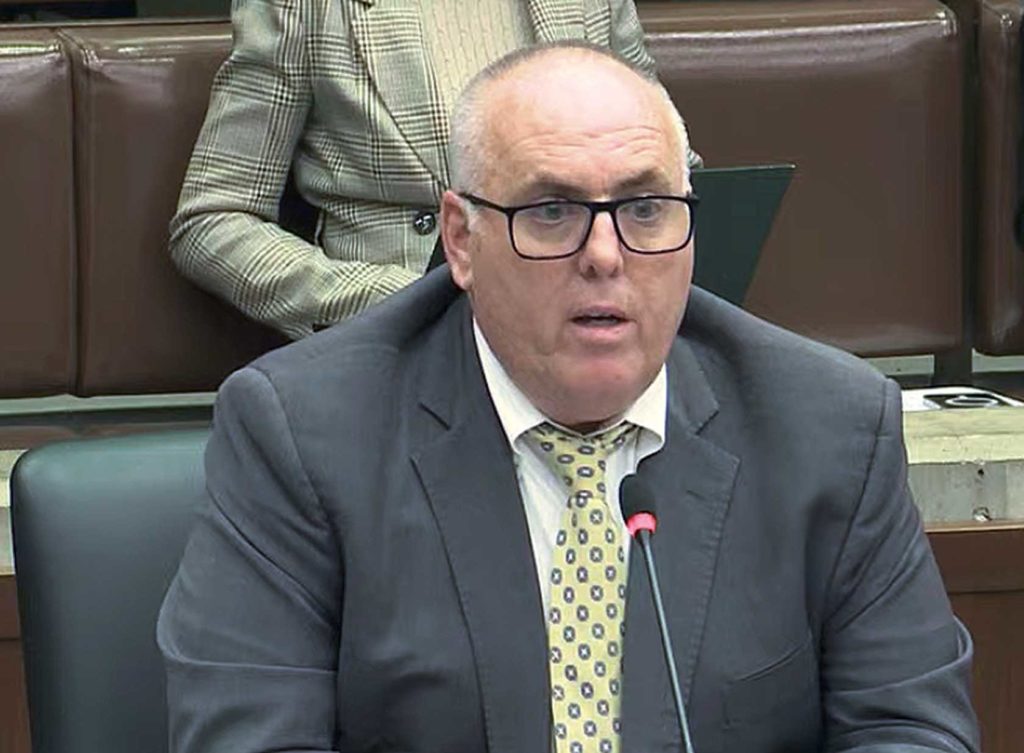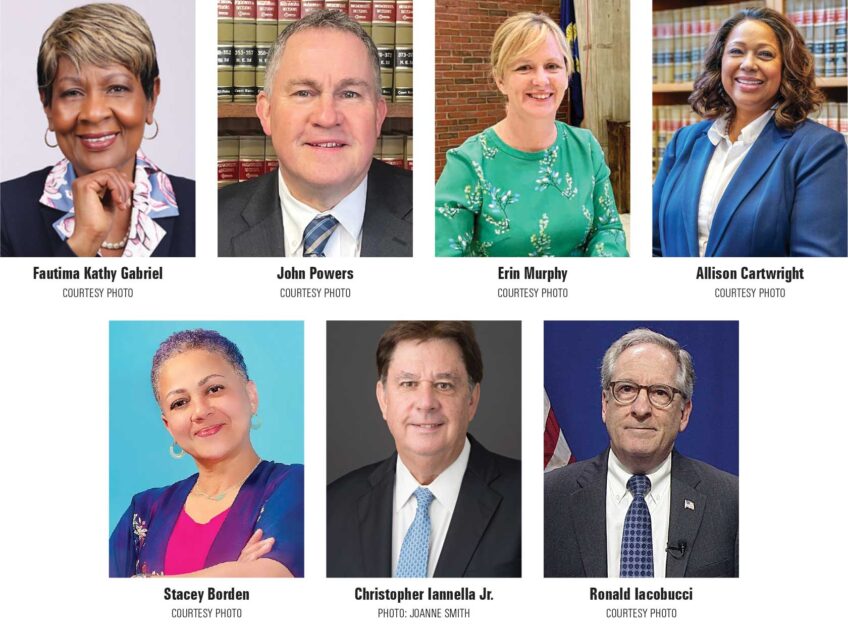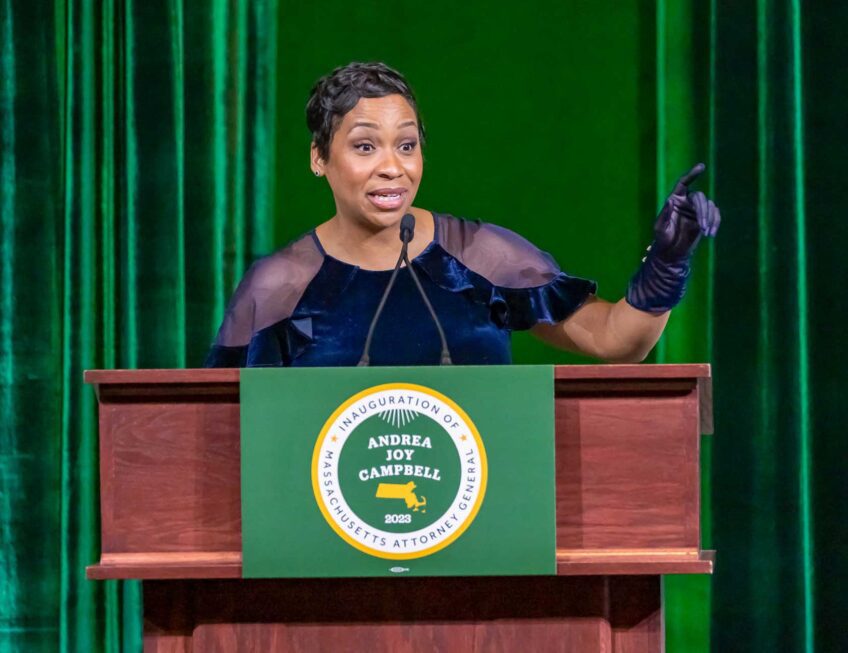Councilors clash over redistricting
With excess population, Flynn unwilling to budge on either side of District 2

A redistricting map supported by voting rights advocates sparked fierce pushback from white City Councilors Monday during a heated hearing in City Hall’s Iannella Chamber.
City Council President Ed Flynn, who represents South Boston, Downtown, Chinatown and parts of the South End, blasted the coalition-backed map, which was submitted by councilors Liz Breadon and Ricardo Arroyo, questioning whether advocates had violated open meeting laws.
“I’m concerned that there’s a map that’s already been discussed and it already has seven votes to pass it,” he said.
Breadon, who heads the Redistricting Committee, said the map, which was sent to council members Monday morning, was not subject to a secret council discussion.
“I can assure you your colleagues were not working behind the scenes,” she said. “The map was generated by advocates.”
From that rocky beginning, the conversation shifted to the map itself, which was filed by Arroyo and Breadon Friday. While Flynn has maintained that he wants to keep all of South Boston in his district, he has also said he wants to keep the housing projects in the South End — the Castle Square, Villa Victoria and Cathedral developments — in his district.
Although the Arroyo/Breadon plan would leave those projects intact, District 2, as drawn, is the most overpopulated of the nine districts. Flynn would have to shed 13,481 people to hit the ideal average population of 75,071. His expressed refusal to give up precincts on either the South End side or the Dorchester side of his district would render that goal impossible.
Flynn did not acknowledge that point during the Monday hearing.
“When people are trying to dismantle my district and take public housing out of my district, I take that personally,” a visibly angered Flynn told his colleagues.
District 3 Councilor Frank Baker, whose district is the most under-populated of the nine, similarly expressed frustration with the Arroyo/Breadon map, telling councilors it would divide communities in his district.
“They’re telling us white people don’t matter,” Baker said.
At-large Councilor Julia Mejia asked that her colleagues not take the maps personally.
“These council seats do not belong to us,” she said.
Mejia said she was pressured by a colleague to take a stand against the map submitted by Arroyo and Breadon, although she did not name the councilor.
“This is not about me turning my back on South Boston,” she said.
While Flynn repeatedly expressed an unwillingness to pry public housing developments from his district, District 5 Councilor Ricardo Arroyo noted that Flynn signed on to two maps that did just that — one filed by at-large Councilor Erin Murphy and another filed by Breadon and District 4 Councilor Brian Worrell.
“Both maps put South Boston Housing projects in District 3,” he reminded Flynn. “I don’t fully understand what the major differences are when he could sign on to maps that did that, and today says it’s a bridge too far.”
Arroyo said that the first map he filed took a South Boston housing project from District 3 and returned it to Flynn’s district and did not add any South Boston precincts to District 3. Yet neither Flynn nor at-large Councilor Michael Flaherty, also a South Boston resident, signed on to his map.
For his part, Flaherty cautioned against Boston councilors repeating what happened in Los Angeles, where a Latina City Council President was caught on recording referring to the Black child of a fellow councilor as a monkey and disparaging a white colleague during a closed-door meeting on redistricting.
Flaherty called on his colleagues to submit maps that minimize the number of precincts being transferred from one district to another.
The map submitted by Arroyo and Breadon keeps Flynn’s district with the highest number of residents — 77,152 — and keeps Baker’s district with the second-lowest number — 72,147. The maximum deviation from the 75,071 ideal average in the map is 4.58%, just under the 5% maximum allowable deviation. The Arroyo/Breadon map moved far fewer precincts than would be necessary to create truly equitable districts, seemingly to avoid making changes to Flynn’s and Bakers’ districts.
Flynn doubled down on his appeal to keep the South End housing projects in his district. While the Arroyo/Breadon map, which Arroyo sponsored on the council, would keep those projects in Flynn’s district, the map Arroyo submitted earlier would have removed the Villa Victoria and Cathedral precincts from his map.
“I haven’t taken a day off in five years, because my constituents need me,” Flynn said, raising his voice. “I take this very personal, as you probably can tell. When my colleagues tried to divide communities of color in my district, that’s personal to me. And I’m disappointed in my colleague for that, for not standing up for people of color in my district, disregarding them.”
While Flynn angrily expressed an unwillingness to cut from either end of his district — a position that would render the work of cutting down the 13,481-resident surplus in his district virtually impossible — Mejia noted an uncivil tone from the white councilors and drew a contrast to their condemnation of a heated exchange from Black councilors who objected to Flynn removing Arroyo from the chairmanship of the redistricting committee in August.
“I’m trying to be here and be completely present,” she said. “The energy I’m receiving from the other side feels hostile and we’ve been asked to tone it down. But that’s not what we’re seeing.”
Community support
Voting rights activists on Tuesday praised the map Arroyo and Breadon submitted Friday, which was based largely on the so-called “unity” map the groups put together.
“The NAACP Boston Branch is pleased with the leadership, selflessness and courage of Councilors Breadon and Arroyo in bringing forward a “unity” map to the council for consideration,” NAACP Boston Branch President Tanisha Sullivan said in a statement.
“In the spirit of the Voting Rights Act, the Chinese Progressive Association is deeply committed to ensuring the voices of the Chinese community are strengthened through this redistricting process,” said Karen Chen, executive director of the Chinese Progressive Association. “Our work is not complete, and we believe the Breadon/Arroyo map does what is needed in this cycle to strengthen that voice throughout communities of color.”
Activists from MassVOTE, the Urban League of Eastern Massachusetts, New England United for Justice and the New Democracy Coalition also expressed support for the map.







